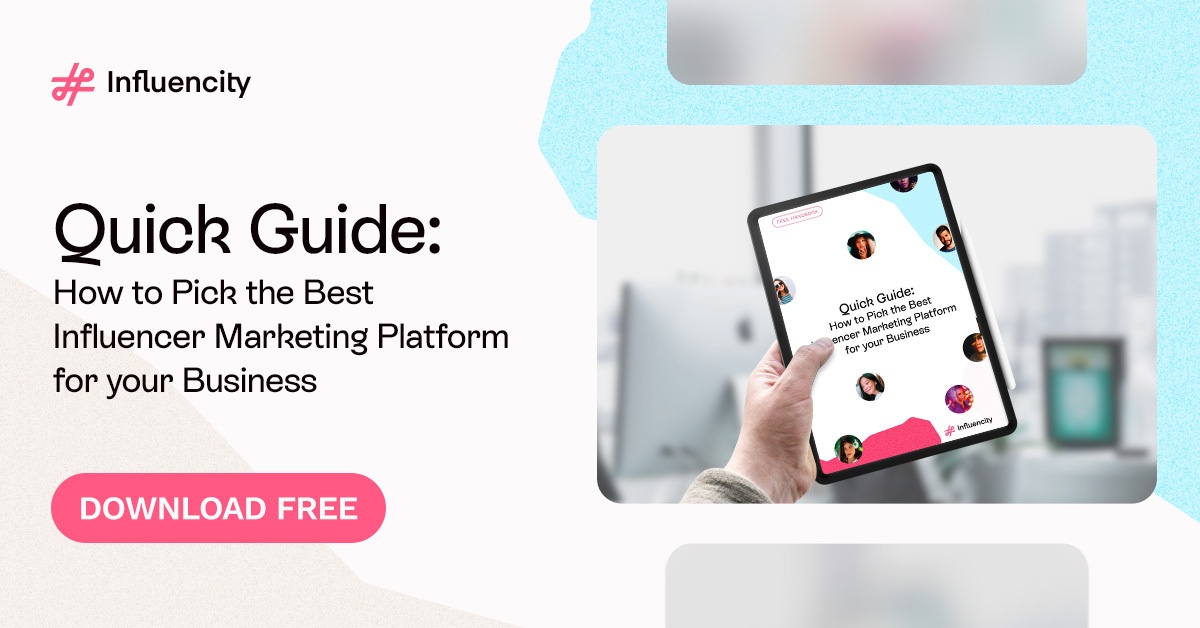Influencer Marketing KPIs: What to Look For
Choosing influencer marketing KPIs that align with your goals is the most effective way to measure the impact of your campaigns and calculate your ROI. But with so many metrics available, how do you know which ones are best?
In today’s post we are going to examine the best KPIs for measuring reach, engagement, conversions and campaign ROI so that you know what to include in your influencer marketing strategy. That way, you’ll have access to the best campaign performance insights, and you’ll know exactly what you need to do in order to improve your future campaigns and get the most from your influencer partnerships.
Campaign reach
When it comes to influencer marketing KPIs, the first thing you should be analyzing is the reach of your campaign posts. This will give you an idea how much of an impact your chosen influencer is having on your brand awareness.
There are a number of ways to analyze reach. Above all, what you want to look at is the size of your influencers’ audience, any growth in your brand’s social media followers, and how many content views and impressions your posts are getting. Make sure you are using the right influencer marketing tools to get the data you need.
Track the following influencer analytics to measure your brand awareness:
- Influencer followers: how many followers does your influencer have?
- Brand social media followers: has your audience grown since you started collaborating with an influencer?
- Impressions: how many times has your content been displayed?
- Total reach: how many people in total have seen your campaign?
Social engagement
Influencer marketing KPIs can also help you identify how engaged your influencer’s audience is with your content. This is because the more engaged your target audience is with your brand, the more successful your influencer has been in generating positive brand sentiment and creating meaningful interactions with their audience. In other words, the more people they have managed to convince to connect with your brand. And the more people you have wanting to connect and engage with your brand, the more potential customers you will acquire. Engagement is also a good indicator of how well suited your brand is to your influencer’s audience, which can help you identify the best influencers for long-term partnerships.
Here are the best ways to measure campaign engagement:
- Likes
- Comments
- Shares
- Brand mentions
- Use of campaign hashtags
Conversions
Conversions are where things get interesting. Of all the quantitative influencer marketing KPIs, they are perhaps the most important because they directly correlate with your ROI. In other words, they tell you how many people are interested enough in your brand to put their thoughts into action.
Conversions can mean a number of things depending on the goals of your campaign. They might be direct sales, subscriptions, downloads, or newsletter sign-ups. What matters is that you define what a conversion is for you, then track the right metrics on a regular basis to see what impact your campaigns are having on your bottom line.
Here are a few handy techniques you can use to track and measure your conversions:
- Promo codes: if you are collaborating with multiple influencers, assign unique promo codes to each one so that you can tracking individual conversions.
- Affiliate links: used to track sales generated by each influencer.
- UTM links: used to create unique, trackable URLs.
Campaign ROI
Finally, when it comes to influencer marketing KPIs, you need to make sure you are investing in the best influencer to ensure the highest possible return on your investment.
One of the best ways to calculate ROI is by looking at Earned Media Value (EMV). EMV indicates the success of your influencer campaigns. Basically, it indicates how much you would have invested in paid campaigns to get the same results.
You can calculate your EMV easily, you just need to know the CPE (Cost per Engagement or Interaction), CPM (Cost per Mille Impressions) and CPR (Cost per Reach) of your current paid campaigns. So, imaging that in your paid campaigns an interaction costs you $1 on average, if a post gets 1,000 interactions, it will cost you $1,000.
Now, to calculate your EMV, you will need to do the same math with the influencer posts, so if an influencer post gets 2,000 interactions, your EMV will be $2,000, a much better ROI than with your paid campaigns.
The higher your EMV, the better job an influencer is doing of promoting your brand.
Tags:






















%20and%20How%20Can%20They%20Benefit%20Your%20Brand%20article.jpg?length=628&name=What%20Are%20Key%20Opinion%20Leaders%20(KOL)%20and%20How%20Can%20They%20Benefit%20Your%20Brand%20article.jpg)








